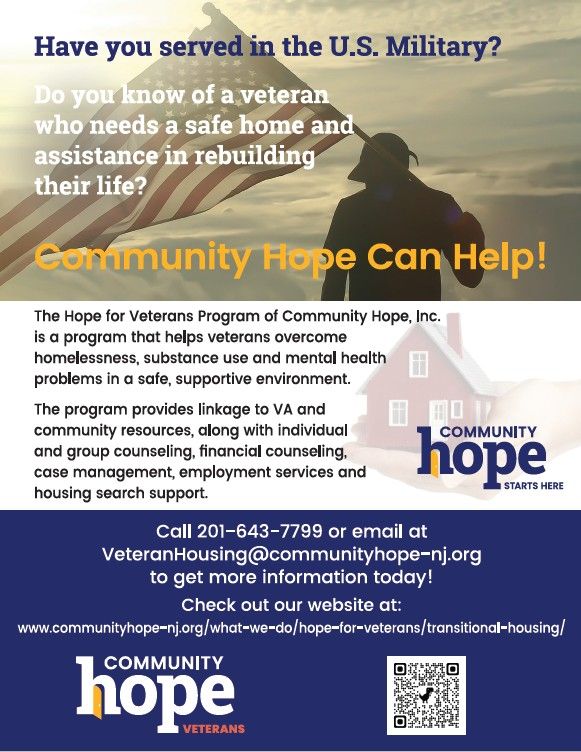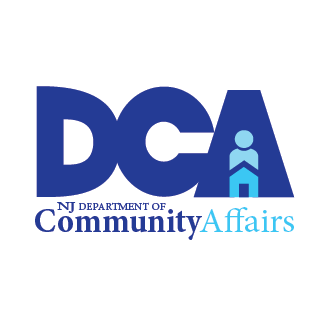HOMELESS VETERAN POPULATION
A homeless person is federally defined under the McKinney-Vento Act as an individual or family lacking fixed, regular and adequate nighttime residence. Thanks to efforts by this committee, the definition is also expanded to include those fleeing domestic violence and other dangerous or life-threatening conditions.
Immunity to homelessness does not exist for any subset of the veteran population. Homelessness does not discriminate against gender or race, though it is worth noting that women veterans are an exceptionally vulnerable portion of this population. Women veterans are at an increased risk of homelessness (2.4 percent), when compared to their male veteran counterparts (1.4 percent). This is in part due to their increased risk of post-traumatic stress disorder (PTSD), loss of employment, dissolution of marriages, and feelings of having a lack of gender-specific support. These increased risks may all be amplified if the veteran does not self-identify as a veteran –– meaning they may be less likely to be offered or seek veterans benefits. It is also important to note that 21 percent of homeless women veterans have dependent children, which often times may add to the anxiety and importance of finding permanent housing. In the VFW’s survey of women veterans, 46 percent of women veterans who were homeless or at risk of becoming homeless were currently living in another person’s home, of that 46 percent, 71 percent have children.
PROGRESS IN ADDRESSING NEEDS
Since 2009, the rate of veteran homelessness has been nearly sliced in half. With an overall decrease of nearly 50 percent of this population, and three states and 57 communities having virtually ended veteran homelessness within their borders, efforts between VA, DOL, and HUD have clearly been successful. However this should not create complacency, as major metropolitan areas saw slight increases in their homeless veteran populations between 2016 and 2017.
This impressive rate of progress over recent years is in part due to VA using various evidence-based practices such as Housing First, Getting to Outcomes and the Maintaining Independence and Sobriety Through Systems Integration, Outreach and Networking: Veterans Edition. By implementing these programs with case management teams serving homeless veterans VA has been able to target veterans who struggle with comorbidities that adds to their risk of homelessness, while helping them obtain a stable roof over their heads. These practices include, but are not limited to, programs such as Department of Housing and Urban Development-VA Supportive Housing (HUD-VASH) vouchers, Homeless Providers Grant and Per Diem Program (GDP) and Supportive Services for Veteran Families (SSVF).
The HUD-VASH program is a collaborative program between HUD and VA which emphasizes the "Housing First” model of care. In this program, homeless veterans receive a housing choice rental voucher from HUD, which is paired with VA case management and supportive services to sustain housing stability and recovery from physical and mental health programs that may contribute to or result from homelessness. Approximately half of the veterans who have used this program have accomplished their goals or no longer require services. In 2016, HUD-VASH housed 72,481 veterans.
However, veterans fortunate enough to obtain HUD-VASH vouchers also face difficulties. The VFW’s service officers have reported in various cities that their homeless veterans sometimes prefer sleeping under a bridge rather than living in the unsafe neighborhoods eligible through their vouchers. With a high percentage of homeless veterans suffering from poor mental health, the VFW does not believe they should be forced to struggle with their PTSD in some of the most unsafe neighborhoods in the country. Nor should survivors of sexual trauma be forced to choose between homelessness and a neighborhood where their homes have been broken into and they are harassed on the streets. The VFW urges Congress, VA and HUD to work together with local VA’s to find solutions best for those cities to ensure HUD-VASH vouchers put veterans in safe and secure housing.
Veteran families transitioning to permanent housing with low income may utilize SSVF. This program was designed to rapidly rehouse homeless veteran families and prevent homelessness for those at imminent risk. In 2016, SSVF assisted nearly 150,000 individuals, all of whom are veterans or their families.
Under the GPD program, grants are awarded by VA to community-based agencies to create transitional housing programs and offer per diem payments. This is intended to promote the development and provision of supportive housing and supportive services with the goal of helping homeless veterans achieve residential stability, increase their skill levels and/or income and obtain greater self-determination. In 2016, more than 16,500 veterans exited these programs for permanent housing. It is worth noting that without the case management support that comes with HUD-VASH, veterans using the GPD program will most likely struggle to maintain a level of stability and housing.
Aside from Housing First programs, VA also offers a variety of health care services specific to the needs of homeless veterans. This ranges from the Homeless Veterans Dental Program to Homeless Patient Aligned Care Teams. This is absolutely crucial to the holistic needs to overcome homelessness.
To further address the holistic needs of overcoming homelessness, VA is partnered with DOL for employment training and searching. The Homeless Veterans Reintegration Program (HVRP) provides veterans with case management to assist in training, searching and placement. This program is the only DOL program wholly dedicated to providing homeless assistance to homeless veterans. It is critical in offering assistance to homeless veterans as they become more stable and helps prepare them to reenter the workforce in a role of meaningful, long-lasting employment.
Through surveys, the VFW is aware homeless veterans are significantly more likely to be dissatisfied with VA employment benefits and the Transition Assistant Program. Congress and VA recognized certain veterans face considerable barriers to employment and need more inclusive case management and support services. To address this issue, Congress created the Vocational Rehabilitation and Employment (VR&E) program. VR&E also provides other support, such as counseling and assistance finding meaningful employment. The VFW views VR&E as a cornerstone of VA services. That is why we urge Congress to expand VR&E eligibility requirements by authorizing VA to classify homelessness as a qualifying barrier to employment, without regard to service-connection or when a veteran was discharged from military service.
HOLISTIC CARE NECESSARY TO IMPROVE
Treating and eliminating homelessness must be done in a holistic manner. This involves taking a deep look and understanding at the homeless individual’s status of income and employment ––whether that employment is meaningful or not, if they suffer from mental illness, substance abuse disorders, disabilities or a lack of basic independent life skills. For veterans, these individual symptoms of homelessness are often magnified when trying to transition from military to civilian life. They may have unsuccessful attempts at reintegrating into their new life and community post-military service. Supportive services such as legal assistance or child care help ensure homeless veterans are able to successfully transition back to civilian life. The VFW believes it is absolutely imperative for Congress, VA, DOL and HUD to systematically address the holistic economic, psychological, sociological and overall health care needs of veterans asking for assistance in overcoming homelessness.
One particular way this can be done is by meeting the need of child care assistance for veterans seeking employment training through VA and DOL programs. Through VFW’s survey of women veterans, we found that one of the top barriers to overcoming homelessness for this population was access to child care. If a veteran cannot afford rent, then it is not feasible to assume they can afford the cost of child care. This is why the VFW urges Congress to pass legislation which would allow for cost-free access to such services for veterans below state poverty threshold limits. Cost-free access to child care for this population would also serve as one of the few means for VA and DOL to prevent homelessness. Many benefits require veterans to be on the streets before they are deemed eligible for benefits.
There are currently four pilot sites offering free child care within VA, which are not limited to low-income veterans, but have been vital tools in ensuring veterans are able to attend their scheduled appointments or complete treatment regimens without the child care pilot program. This important program must be made permanent and expanded to include homeless veterans and those at risk of becoming homeless.
The VFW also encourages Congress to work with VA to provide more separate living arrangements for veterans with children and veterans who have survived sexual trauma. Congress and VA must work together to better understand that individuals face homelessness for different reasons, and their needs to overcome homelessness are equally unique.
FUNDING
While the reduction in veteran homelessness has been impressive, and the holistic partnerships and approaches taken by VA, HUD and DOL are absolutely critical to that success, such success could be diminished if funding fails to keep pace with demand. Congress must not force the government to manage by the need of budget for this population, but by the need of demand.
The National Coalition on Homeless Veterans (NCHV) found that flat funding for VA’s pillar programs in fiscal year 2018 will not meet the necessary demand to continue reducing the homeless veteran population. Of particular concern for the VFW and NCHV are HVRP, HUD-VASH and SSVF. The HUD-VASH program alone is credited as being the most responsible for the nearly 50 percent decrease in the homeless veteran population as this program has helped house nearly half a million veterans and their families.
Specifically, the VFW has great concerns with VA’s decision to realign specific-purpose funds allocated for homeless programs as a means to provide VA health care facility directors with more individual control over their location’s general funding needs. In theory, this could be a successful idea. But this theory will undoubtingly be a failure without the transparency and desire to work with Veteran Service Organizations (VSOs) and Congress, and that cost should most certainly not come at the expense of homeless veterans.
After receiving negative feedback from VSOs, and a letter from the Senate Appropriations Subcommittee on Military Construction, Veterans Affairs and Related Agencies, VA chose to put a temporary halt on this initiative. We ask that this committee join us in closely monitoring VA’s attempts to handicap its successful homeless veterans programs.
Taking away the guaranteed specific-purpose funding for homeless veteran programs, such as the massive cut initially suggested by VA to HUD-VASH, would result in a guaranteed failure of the program. The specific funding for HUD-VASH is crucial to the ability of case managers within VA to properly perform their jobs and assist homeless veterans in all the ways they are intended to help. These case managers are like life coaches for homeless veterans getting their feet back on the ground. This program’s case management is the embodiment of the holistic approach and answer to successfully overcoming homelessness.
Since VA has reconsidered and postponed the timeline to readjust this funding, the VFW has eagerly awaited the opportunity to have a transparent and open conversation with VA about the intent and how to responsibly move forward. Yet just because the decision was put on hold for now does not mean there were no repercussions. The VFW’s Department of California’s Homeless Service Providers have found that VA’s attempts to reallocate HUD-VASH funding has negatively impacted the program.
The two primary concerns they have found thus far include employment rates of HUD-VASH case managers as well as individual state-funded programs for homeless veterans. In communities across California, such as Kerr County, VA has not been able to hire enough HUD-VASH case managers even with current funding. This results in case managers taking on an average of 50 homeless veterans instead of VA’s suggestion of 25 homeless veterans per case manager. While managing twice as many veterans as suggested, and with the travel requirements of case management, locations such as these are not able to utilize all the vouchers they receive. With a massive cut in funding, there is a major fear that employment rates for case managers will only get worse. It has also been rumored that voucher distribution will be halted in some communities, out of fear that they will run out.
Also, various states who have implemented their own programs to assist in combating veteran homelessness that rely on HUD-VASH funding. For example, California’s Proposition 41, Veterans Housing and Homeless Prevention Bond, is heavily dependent on VA’s Supportive Housing as a subsidy for the bonds used to provide for homeless veterans and their families. This serves as an example of how cutting HUD-VASH funding could have even more worrisome unintended consequences that cut deeper than originally thought.









